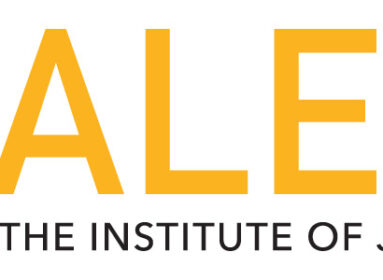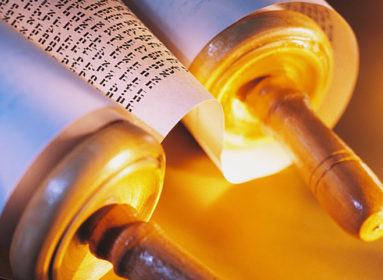
By Vera Schwarcz
 There is a distinctive neurological condition, and we Jews have it. It is really a soul gift. Straight from Sinai – a mountain also called “Horev” because we arrived broken and somehow we became whole. It was the giving of the Torah that pieced us together, and shattered us all over again. We came to the foot of the mountain as family of former slaves. And there, in the most awe-filled moment of Jewish history, our senses became confused.
There is a distinctive neurological condition, and we Jews have it. It is really a soul gift. Straight from Sinai – a mountain also called “Horev” because we arrived broken and somehow we became whole. It was the giving of the Torah that pieced us together, and shattered us all over again. We came to the foot of the mountain as family of former slaves. And there, in the most awe-filled moment of Jewish history, our senses became confused.
After the ground shakes and thunder deafens all ears, after the shofar blasts and after the uttering of the 10 Speech Acts (“commandments,” but really more like the life-creating words of Genesis), we read: ve’chol ha’am roim et ha kolot… and the whole nation saw the sounds/voices. Scientists call this “joint perception” – during which the stimulation of one sensory organ leads to a secondary cognitive pathway. In an average population, very few people – often poets and musicians – experience synesthesia. Yet the entire Jewish people did at Sinai.
We saw what could only be heard. In the process, each person was addressed directly, each sound was uniquely calibrated and each Jew experienced existence anew. Each of us became capable of double cognition and hence we were able to answer with a two-fold commitment: naaseh ve’nishma…we shall do/act [in keeping with the Torah] and then understand/learn. Because of this synesthesia of the soul, each of us gained extra sensory perception and envisaged the possibility of action even before fully comprehending the Torah’s complexity. We, mere humans – lowly beings whom the angels mocked as “paltry issue of a woman” according to the midrash – merited access to a kind of holiness denied in the upper realms.
At Sinai, divinity came close to humanity – an utterly inconceivable event, were we to think about in logical terms. Yet we continue to build upon this event and upon the text of the covenant that binds Jews and God every day. We may not see sounds all the time, but the possibility of overcoming the limitations of a single cognitive pathway through our “soul-sense” exists in each of us.
As I walk around in Yerushalaim, I am struck by the many sounds that color my vision here. At dawn, the colors sing of coming spring. An old woman sunning herself at a bus stop accosts me with the sound of light around her. Each day, I glance at the walls of the Old City and the Tower of David. Always stunning, but also not what they seem. Sometimes a poem manages to dig below appearances. Here is one:
The Tower of David
Not David’s really, not even
a tower, merely an enlarged bump
on the crenelated walls of the Old City,
an Ottoman reminder of bygone times,
walls not so ancient, rather a proclamation
of power by Sultan Suleiman silhouetted
no longer a windmill but a pricey wine bar,
with a sommelier and all the trappings
of cultured modernity –
yet beneath it all verdant as ever
Jewish memory embroiders
its own history, like the sap
running quietly up almond trees
in this season when we celebrate
inner renewal, the art of seeing
the young within the old,
the ancient beneath
encrustations of stone
laid upon a will
that will not die.
A long-time resident of West Hartford, Vera Schwarcz made Aliya in July 2018. She lives in Jerusalem and is a senior research associate at the Truman Institute of Hebrew University.
Readers are invited to submit original work on a topic of their choosing to Kolot. Submissions should be sent to judiej@jewishledger.com.








 Southern New England Jewish Ledger
Southern New England Jewish Ledger














